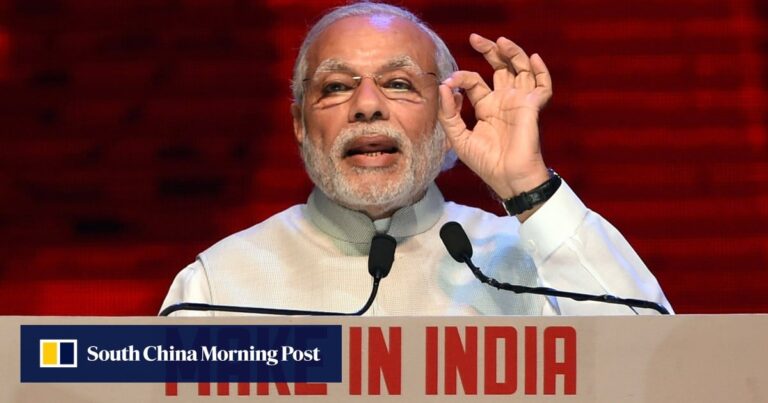But economists say India still needs to address a number of legacy issues that could hinder investment if it is to achieve developed country status.
“Modi has managed to leverage India’s economic growth into a personal achievement,” said Antonio Fatas, economics professor at INSEAD Business School. “It is no exaggeration to say that he and his government are held partly responsible for the growth rate in recent years.”

“This protection comes at the cost of overall economic performance,” he said. “India is doing well, but given how low its per capita GDP is, it should have done better.”
Economists say that for India to rise to the status of a developed nation, its rapid growth will need to lift up all sectors of society, including the poorest and those living in remote areas.
“When we talk about becoming a developed economy, the goal must be clear. Annual per capita income in developed countries is about $10,000 to $11,000.Right now, we are at just over $2,500. NR Bhanumurthy, Vice-Chancellor, BR Ambedkar University of Economics, Bangalore, said.
“There is a big gap. What matters is the degree of inclusive and distributive growth.”

However, New Delhi needs to prioritize land and labor law reforms and capital availability to achieve inclusive growth, Bhanumurthy said.
Although the country’s elite science and engineering universities continue to produce large numbers of graduates who contribute to the global technology sector, many young people, especially in remote and rural areas, struggle to find work because of the poor quality of education. ing.
Nearly one in five Indians between the ages of 15 and 24 was unemployed as of last year, according to International Labor Organization estimates cited by the World Bank.
Despite receiving parliamentary approval, the implementation of India’s new labor code has stalled due to resistance from trade unions who oppose the relaxed hiring and firing provisions and restrictions on their activities.
With a growing population, can India chart a path like China in manufacturing?
With a growing population, can India chart a path like China in manufacturing?
grassroots challenge
Devashis Basu, a chartered accountant, author and portfolio manager, said India’s business environment remains weak despite the government’s efforts to implement reforms such as productivity-based incentive programs aimed at boosting manufacturing. He said it was still difficult.
“It could be about India becoming a global country.” [investment] “Although India is the second largest investment destination after China, the reality is that doing business in India is difficult, so foreign direct investment in India has not increased,” he said.
FDI into India fell nearly 13% in the April-December period from a year earlier, from $36.7 billion to $32 billion, according to government data.
But Finance Minister Nirmala Sitharaman dismissed such speculation, telling local media that the government would “make every effort to make it attractive” for major companies to invest in India.
“What people don’t realize is that for reform to move forward, it has to go down to the grassroots level,” Basu said. “There are too many rules at the state and district level. It is not just the will of the central government or Prime Minister Modi that determines the fate of projects.”
Why Indian startups are struggling to raise funding despite a booming economy
Why Indian startups are struggling to raise funding despite a booming economy
Biswajit Dhar, vice president of the Council for Social Development, a research and advocacy NGO, said India needs a clear strategy to improve efficiency and boost manufacturing. This includes fostering innovation by developing ports and promoting research and development, he said.
Doing so, he said, means resisting “taking political advantage” by rolling out policies such as free food programs. “We need to create jobs. Only when we have them can they climb the income ladder.”


